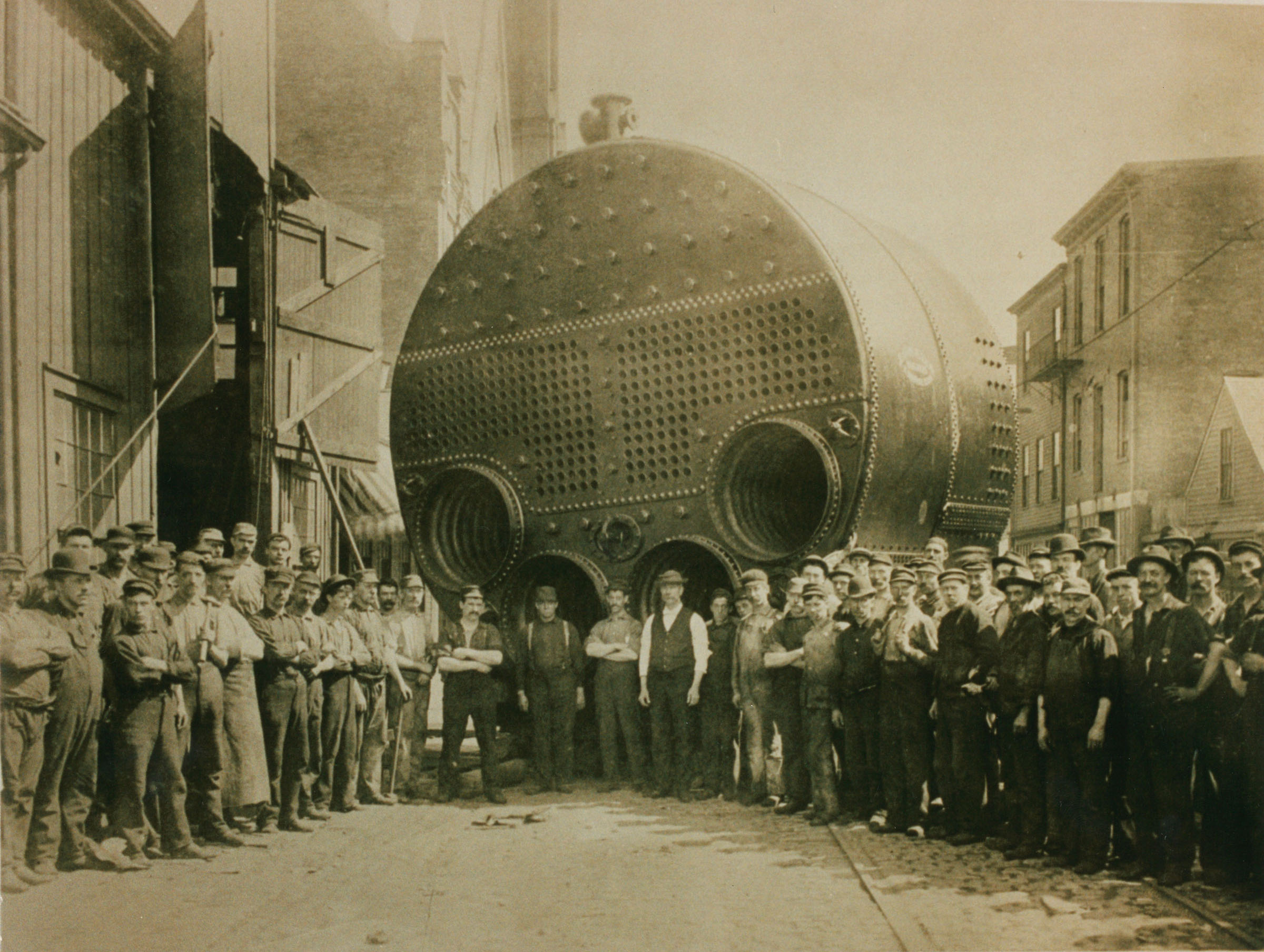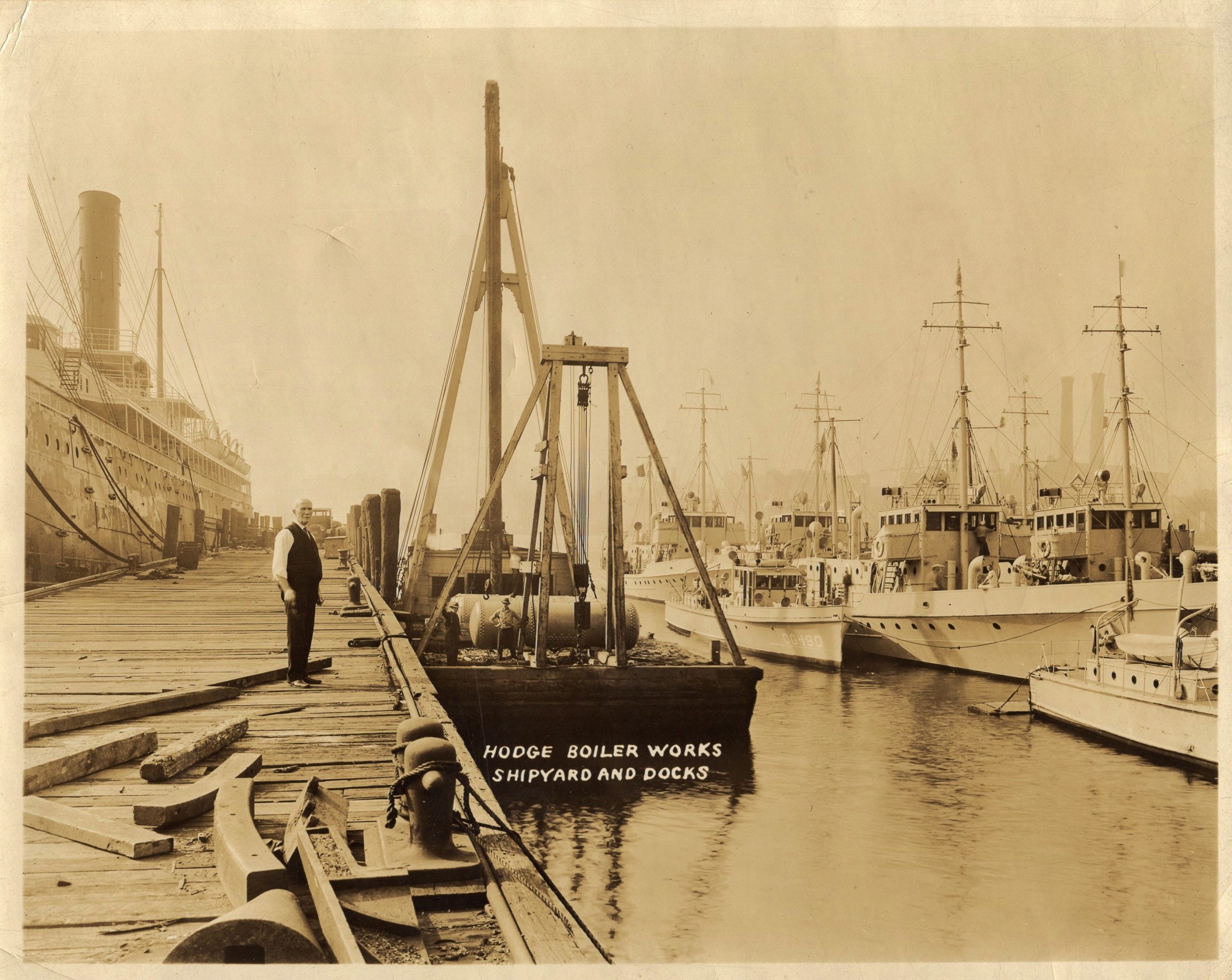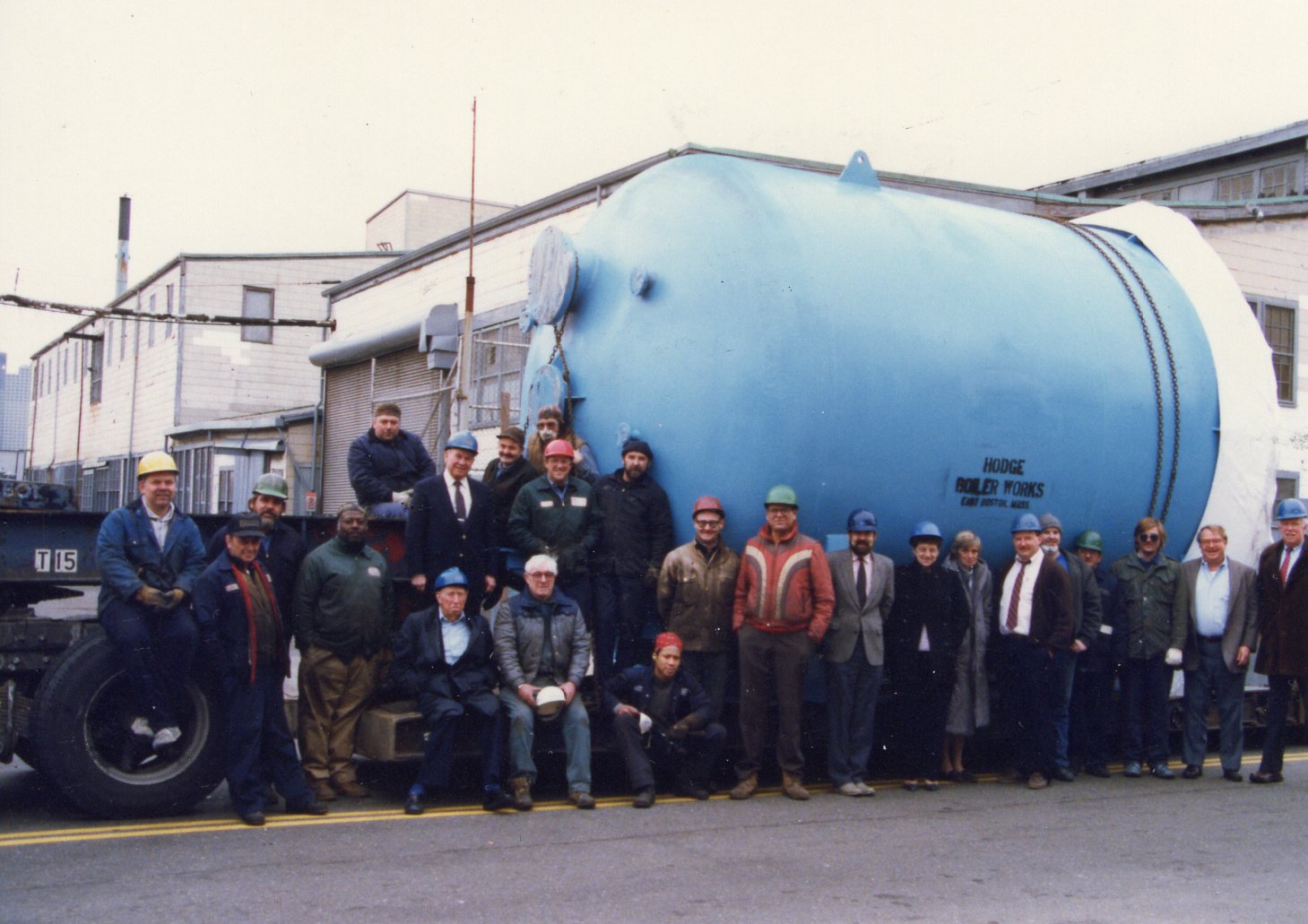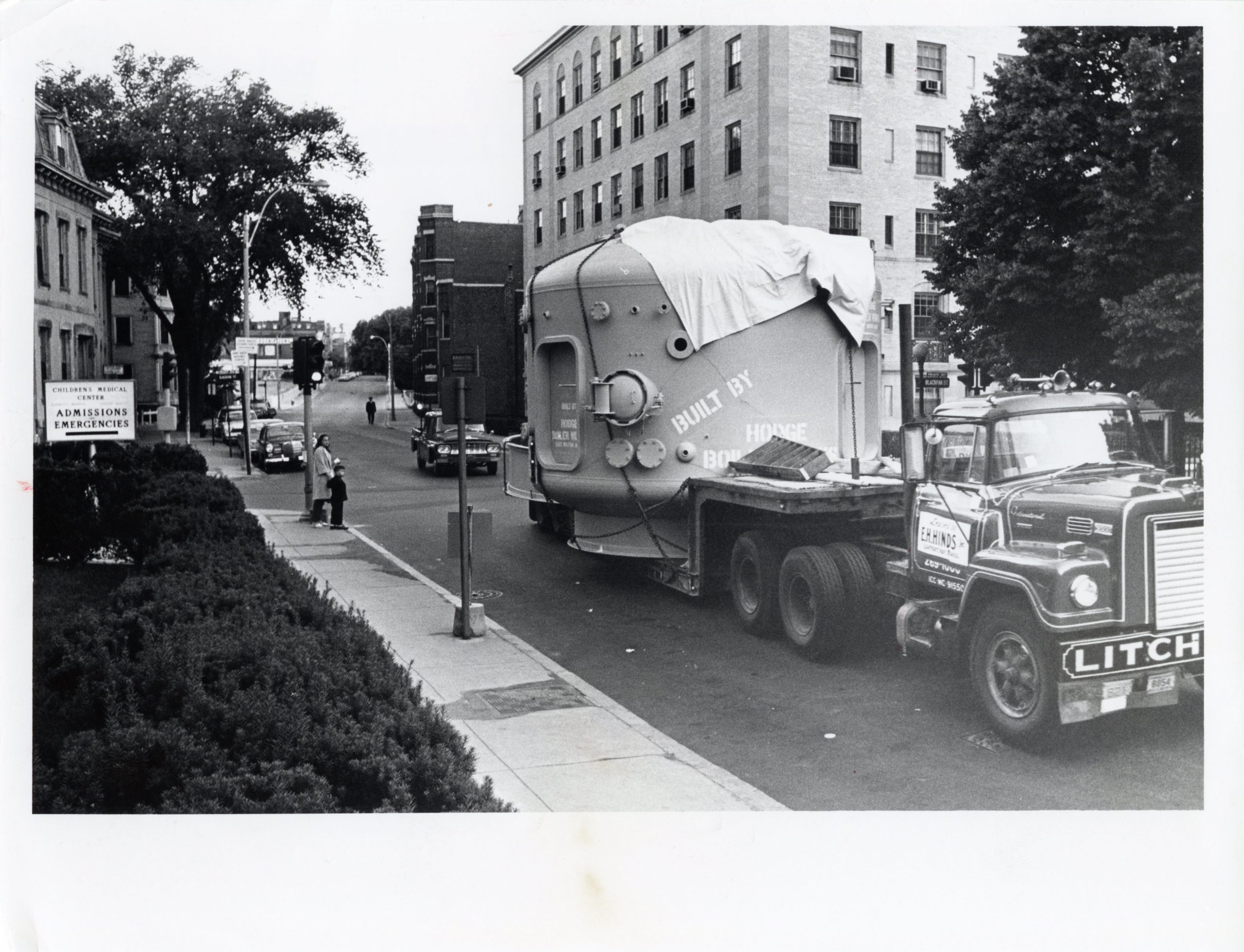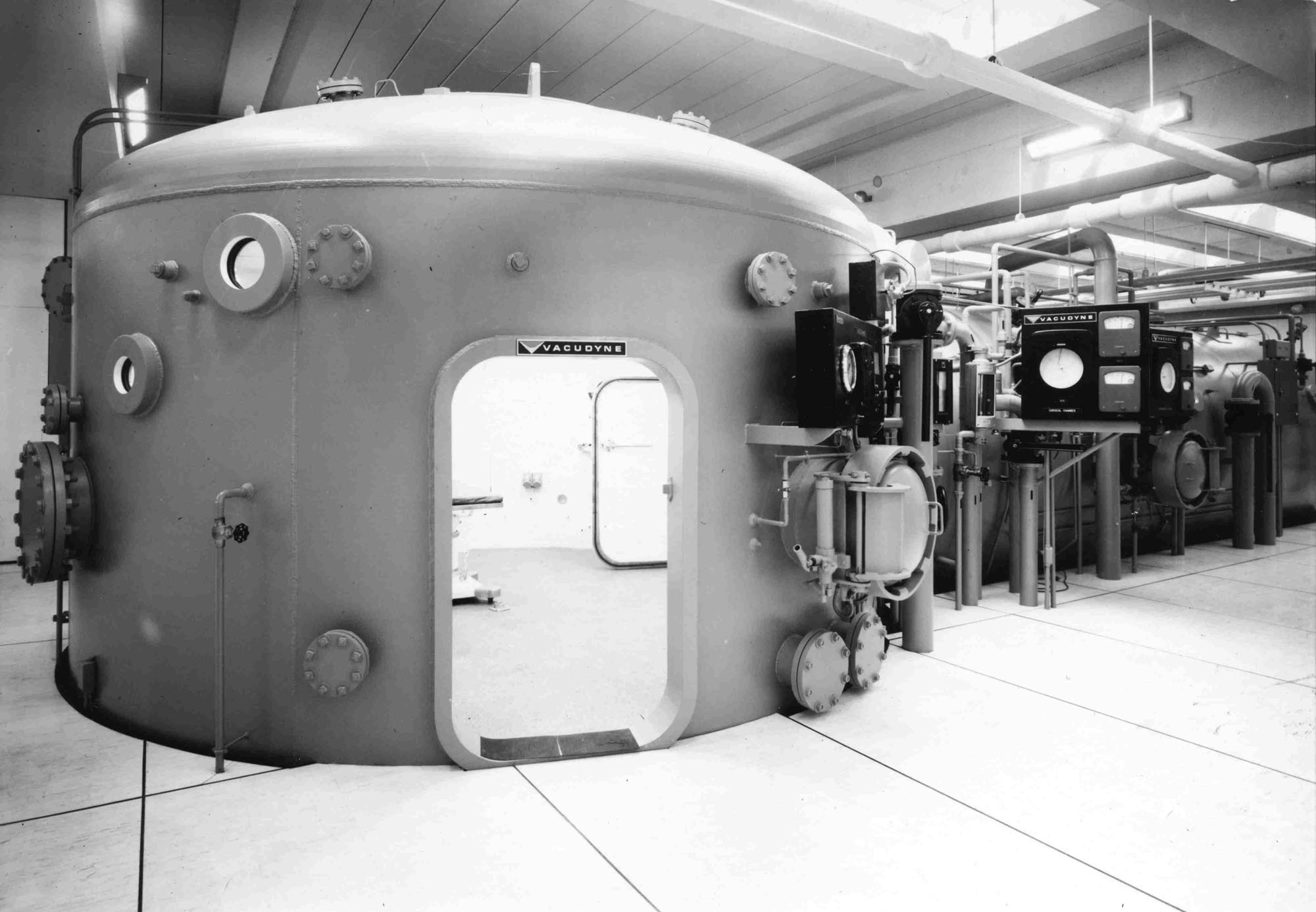From Boilers to Biotech
in East Boston
Hodge Boiler Works workers pose with an enormous scotch marine boiler, circa 1890s. Hodge boilers like this one powered many coastal steamships and ferries along the Eastern Seaboard in the late 19th century.
Courtesy of the Lynch family
Hodge Boiler Works was a metalworking shop that operated in East Boston for 130 years, weathering more than a century of change. When Ebenezer Hodge founded the business in 1864, it was surrounded by shipyards that built and repaired wooden sailing ships. But Hodge’s business was based on a new technology that would soon make wooden shipyards obsolete – iron steamships. Hodge specialized in building marine boilers that powered steamships, even supplying boilers to retrofit wooden sailing ships.
After Ebenezer Hodge’s death in 1891, his business partner, John Lynch, assumed ownership of the company. The business would remain in the Lynch family for four generations. By the early 1900s, Hodge Boiler was manufacturing water towers, boilers to heat buildings, and boilers for steam trains.
As steam engines in turn became obsolete, the company transitioned to building autoclaves, containers that can withstand high temperature and pressure. Autoclaves are used for aircraft manufacturing, sterilizing hospital equipment, and many other purposes. Although Hodge Boiler was remarkably resilient, the East Boston shop closed in the mid-1990s, part of a broader decline in manufacturing in New England.
In 1964, Hodge Boiler Works built a special hyperbaric, or high pressure, operating chamber for Boston Children’s Hospital. A major tech-nological advance, the chamber allowed surgeons to safely perform life-saving corrective heart surgery on infants for the first time. Top: The chamber is delivered to Boston Children’s Hospital. Bottom: The completed chamber installed at the hospital.
Courtesy of Boston Children’s Hospital Archive
Sign Location
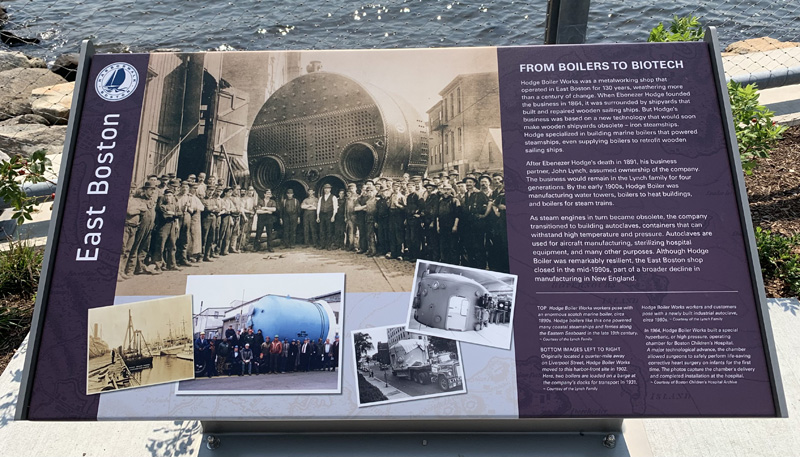
More…
Resources
- Lynch Family, personal correspondence, 2019-2020
- East Boston Argus Advocate, “Industrial Interests, East Boston Mechanics, What The Are Doing, Facts and Figures, E. Hodge & Co.,” May 20, 1882.
- Boston Daily Advertiser, “Ebenezer Hodge Dead,” January 17, 1891.
- Boston Landmarks Commission, Inventory Form BOS.187, Hodge Boiler Works Boiler Shop.
- McAlpine, Kat J., “Boston Children’s Hospital: Vector Blog #TBT: How hyperbaric heart surgery saved infants’ lives in the 1960s,” May 4, 2017, accessed March 20, 2020.
- About the hyperbaric chamber
Acknowledgements
- Warm thanks to the Lynch family.
- Thank you to Nancy Seasholes for her expertise and support.
- Our gratitude to the Perkins School for the Blind and David W. Cook for their partnership in creating the audio files.

